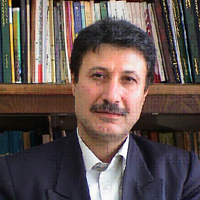An Evaluation of the Interaction of Higher Education and Industry Functions From the Spatial Planning Perspective
One of the important aspects of development from the spatial perspective is the evaluation of the effective long-term processes on the institutional mechanisms of a land and the determination of share of the respective areas in this regard. For many years, economy has been hurriedly moving toward a knowledge-based stance, and the countries that have neglected this movement have been deprived of fundamental developments. In this applied study, which adopts an analytical approach and a quantitative view, the necessity of the proposition of a strategic attitude to the two-way relationship between higher education and the industry sector of Iran is addressed. To this end, first an overview of the previous studies and theoretical principles are made. Then, following the questions and hypotheses and determining the evaluation and analysis methods, the detailed information on over 11 variables (including panel data of 31 provinces of Iran from 2016 to 2019) are collected. These are then analyzed and tested using Excel, Eviews, and Arc GIS through spatial econometrics, generalized method of moments (GMM), weight matrix and geographic-spatial correlation (λ), and KP-HET diagnostic tests. According to the results, the spatial correlation between higher education and industry in Iran is highly significant, and the shock resulting from the industrial and educational development is completely mutual. That is to say, the shock inflicted upon a given province has spread to other provinces of Iran. The findings of this study confirm the effects of the emphasis on the centralization policy stereotype and the prescriptive – rather than land-use-based – roles given to certain parts of Iran. In fact, the very high spatial correlation demonstrates that the nine less-developed provinces of Iran have experienced trivial industrial growth due to a lack of higher education infrastructure. On the other hand, the results of this study shows how the market demand for labor of the university graduates is aligned with the functions of the knowledge-based industries of Iran.
- حق عضویت دریافتی صرف حمایت از نشریات عضو و نگهداری، تکمیل و توسعه مگیران میشود.
- پرداخت حق اشتراک و دانلود مقالات اجازه بازنشر آن در سایر رسانههای چاپی و دیجیتال را به کاربر نمیدهد.


